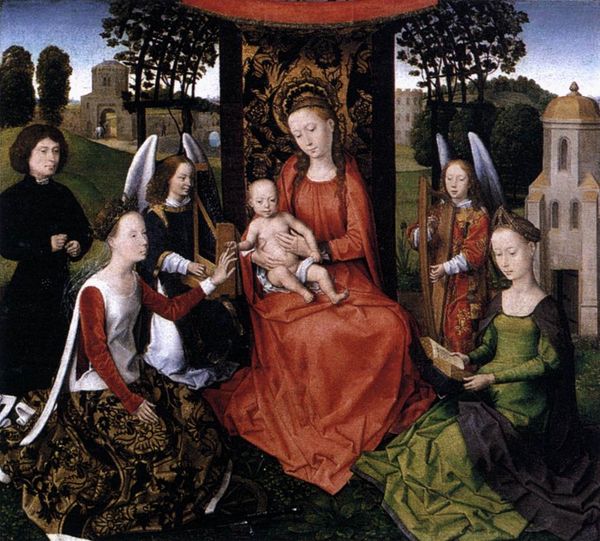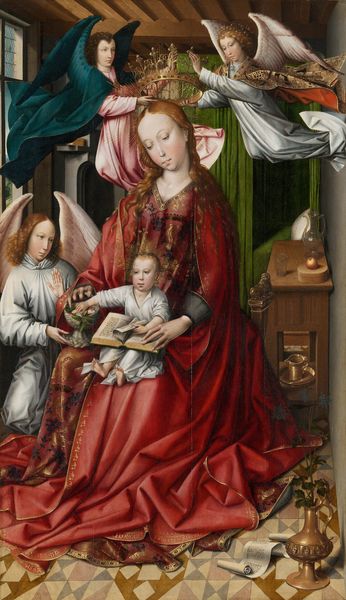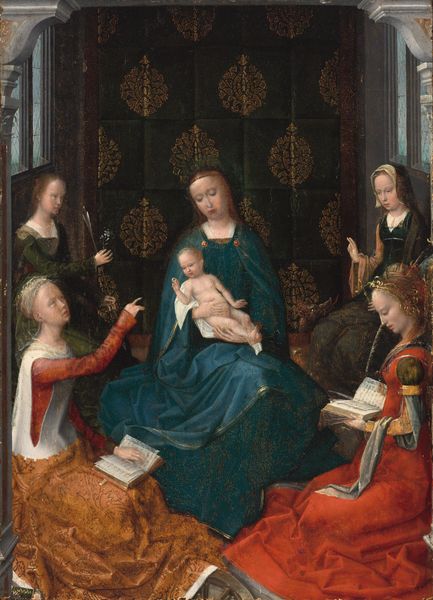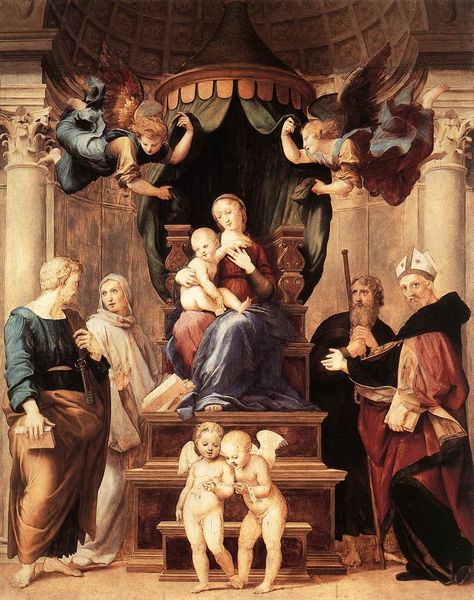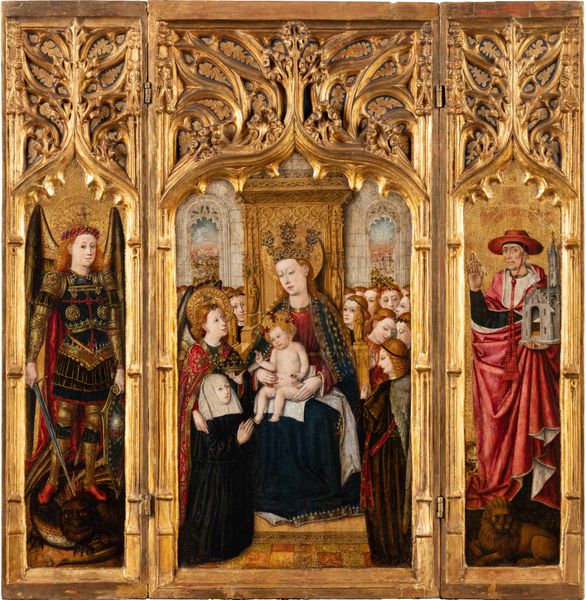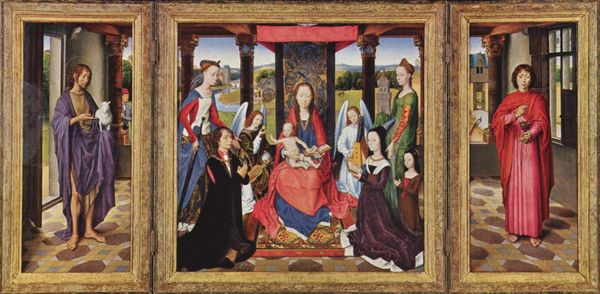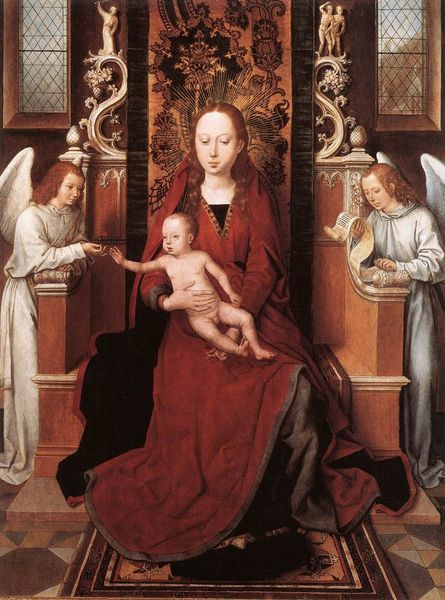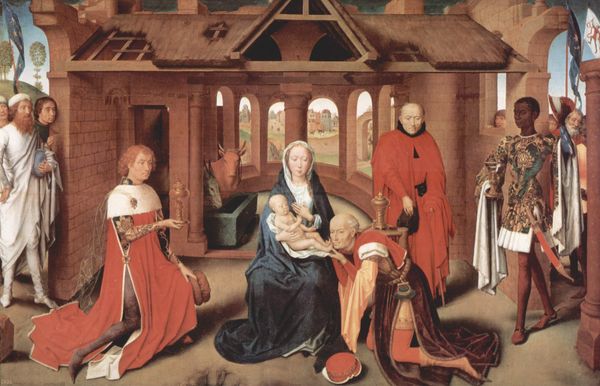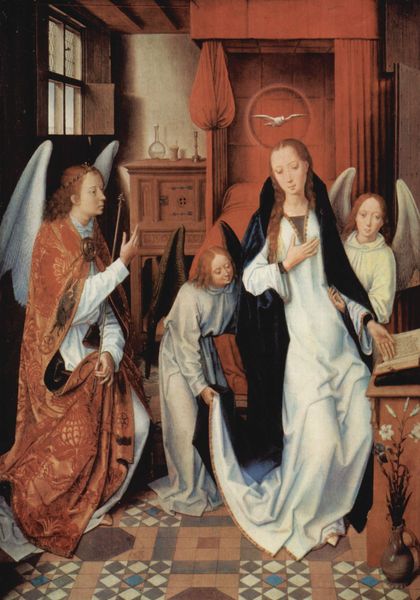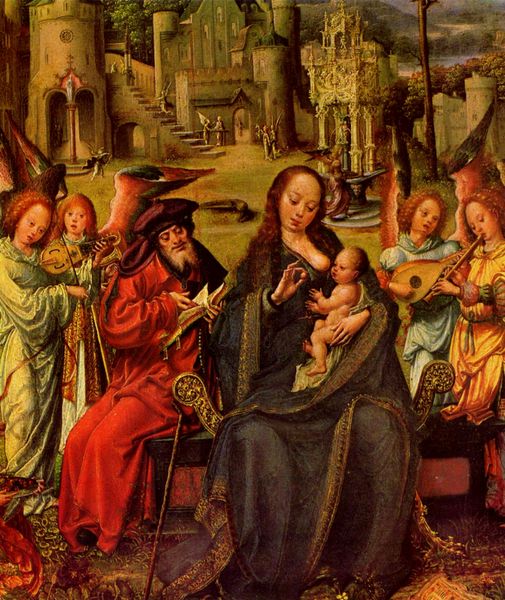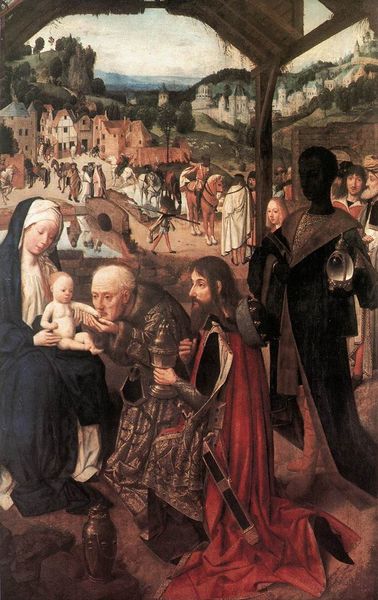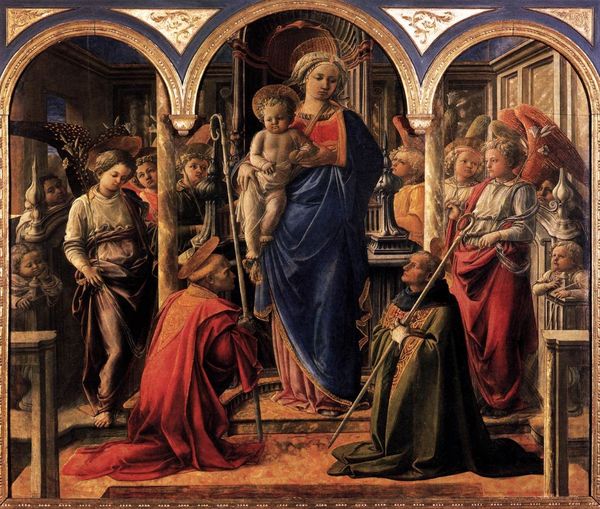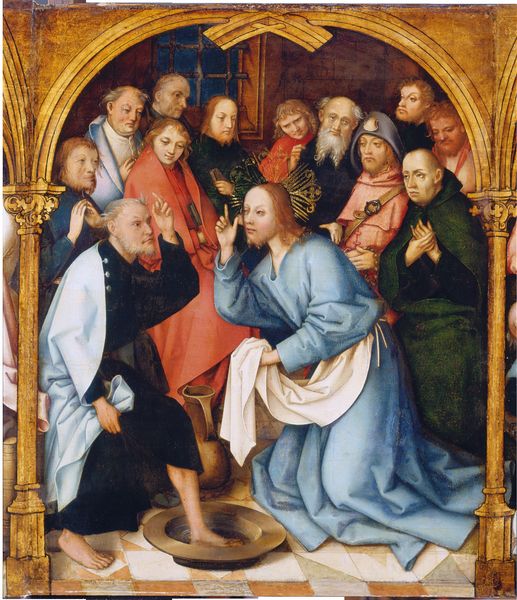
Triptych of the Mystical Marriage of St. Catherine of Alexandria, central panel: Marriage of St. Catherine 1479
0:00
0:00
hansmemling
Memling Museum (Old St. John's Hospital), Bruges, Belgium
panel, painting, oil-paint
#
portrait
#
panel
#
painting
#
oil-paint
#
figuration
#
genre-painting
#
northern-renaissance
Copyright: Public domain
Curator: This is the central panel of Hans Memling’s "Triptych of the Mystical Marriage of St. Catherine of Alexandria," created around 1479 using oil paint on panel. It's currently housed at the Memling Museum in Bruges. What are your initial impressions? Editor: I’m immediately struck by the color; the pervasive use of red, contrasted against the darker columns, feels quite striking, almost theatrical. And there is an impressive interplay between stillness and quiet movement; a combination of portraiture with the qualities of a genre painting. Curator: Indeed. We're looking at a powerful staging of female piety and dynastic power. St. Catherine, elegantly adorned, kneels to receive a ring from the infant Christ held by the Virgin Mary. This central act would have been a politically charged statement during the late fifteenth century. The luxurious garments, too, represent the wealth and power that the Church and affiliated nobility projected during this period. Editor: I can see that; that patterned brocade is exquisite and painstakingly rendered, reflecting the interest in detail characteristic of the Northern Renaissance. Note how Memling uses light to define form, creating almost sculptural volumes, and notice the complex geometry that dictates the composition of the group, guiding the eye. Curator: Beyond the composition, it's interesting to consider the roles women played—or were allowed to play—in this religious and political hierarchy. Catherine is passive, her role almost entirely defined by her relationship to powerful male figures. It underscores the limited agency afforded to women, even saints, within that framework. Editor: While your point about gender is compelling, I'm drawn to the formal language Memling employs; the artist clearly prioritized balance, harmony, and detailed textures. It is remarkable how those sumptuous textures create a sense of presence that permeates the whole pictorial space. Curator: I see it also as a visualization of social and spiritual doctrines, of power structures made visually palatable through artistic conventions. I find myself returning to the knowing, resigned look in St. Catherine's eyes. Editor: It’s in that interplay of artifice and genuine emotional suggestion that its complexity resides, offering various approaches of seeing and understanding. Curator: A powerful fusion of the earthly and divine, indeed!
Comments
No comments
Be the first to comment and join the conversation on the ultimate creative platform.

